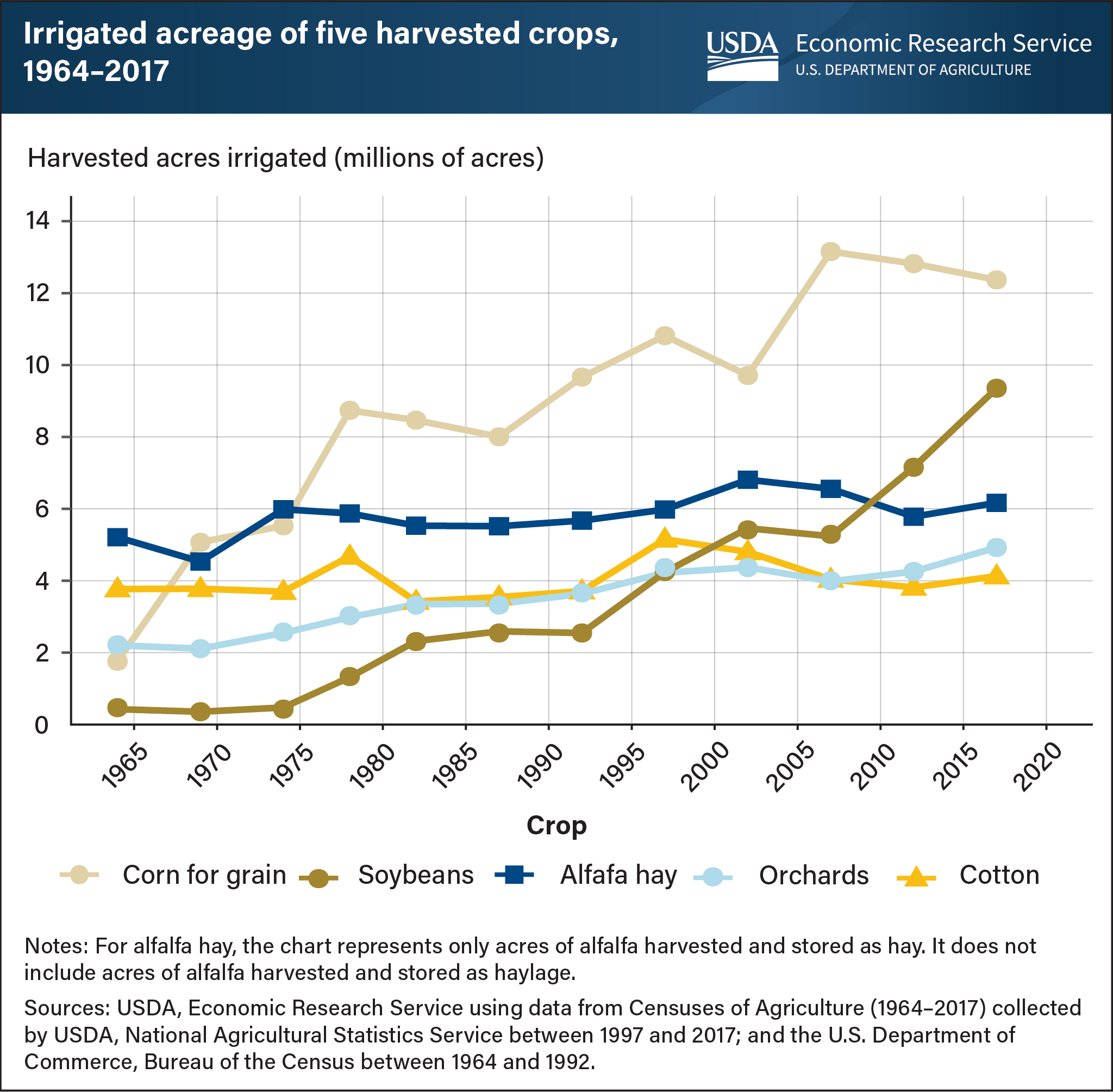Irrigated cropping patterns in the United States have evolved significantly since 1964
- by R. Aaron Hrozencik
- 3/25/2022

Irrigated cropping patterns have shifted significantly in the United States during the past 50 years. In 1964, alfalfa hay and cotton were the most widely irrigated crops, but acreage under those crops has stayed relatively constant since then. Meanwhile, irrigated acres planted in corn for grain and soybeans have increased substantially. In 1964, farmers planted less than 2 million acres of irrigated land in corn for grain. By 2017, irrigated acreage planted in corn grew to more than 12 million acres, making corn for grain the most commonly irrigated crop. Over the same period, irrigated acreage planted in soybeans also increased substantially, from fewer than 1 million acres to nearly 10 million acres. The growth in irrigated corn and soybean acreage reflects, in part, increasing demand for these crops as feedstock sources for bioenergy production and feed for livestock operations, both domestically and abroad. Irrigated corn and soybean expansion also reflects a broader eastward shift in irrigated production acreage over the past five decades. This chart was drawn from the USDA, Economic Research Service report “Trends in U.S. Irrigated Agriculture: Increasing Resilience Under Water Supply Scarcity,” published December 28, 2021.

